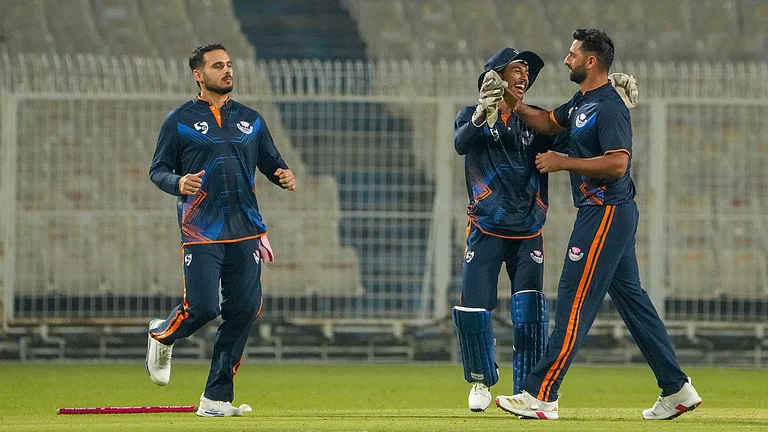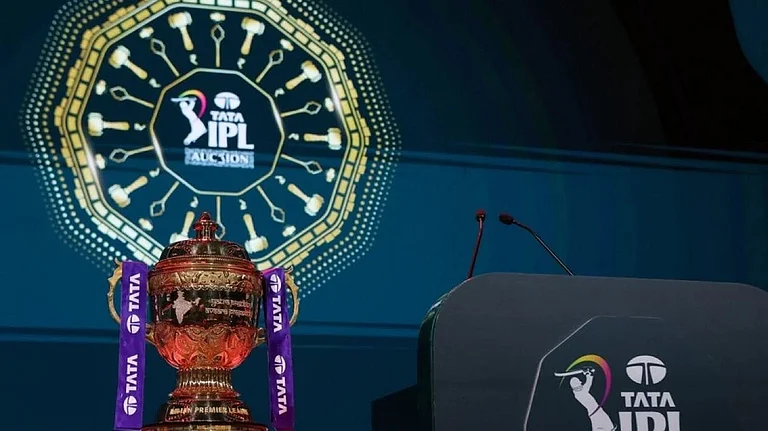Thirty-year-old Kamlesh Bagri in Raisen district has a dream. She wants to start her own business. The Ladli Behna Scheme has re-ignited her dream. The mother of three, Kamlesh who has no formal education after fifth grade wants a better life for her children. She plans to save the money every month and open her own shop. To begin with she wants to sell ‘agarbattis’ (incense sticks).
Thirty-seven-year-old Vandana Dubey in Chhattarpur district has made her bank account functional. She does not have a clear business plan but is ‘excited’ to have some money of her own. Educated till the tenth standard, Vandana, a mother of two, plans to use the money for household expenses and to occasionally splurge on herself.
Twenty-seven-year-old Poonam Bairagi, a mother of four, in Raisen district wants to open a ‘Stitching Center’ with the money she gets. She plans to buy 2-3 sewing machines from the money she saves and even train girls so that they can be self-employed.
Empowerment of women is an important ingredient for the achievement of both transparent and accountable government. Apart from mapping a sustainable development in all areas of life, investing in women’s economic empowerment sets a direct path towards gender equality, poverty eradication and inclusive economic growth.
Economic empowerment increases women’s access to various resources and wide-ranging opportunities. Hamstrung by poverty and discrimination, women take up low wage jobs that may not be safe for them. Considering their pivotal role in economy, women, particularly the marginalized groups should be provided with a robust mechanism which makes them self- reliant.
The Madhya Pradesh government recognizes that empowering women can catalyse development and capacity building. The government has been committed to frame structures and policies to ensure gender balance and equity in decision making processes at all levels. It has mapped schemes that not only empowers women but also ensures their participation in the formulation, implementation and evaluation of policy making.
The Ladli Behna Yojana, that the state government has launched recently is woven around these fundamental objectives.
Gender gap
The Government of Madhya Pradesh has introduced several schemes that focus on women with a larger goal to make them financially empowered. But despite several interventions, gender gaps still persist because of low participation of female workforce. Women continue to take a backseat in decision making. The pandemic has further worsened the situation of women in the job market especially in the rural areas.
The main objective of the Ladli Behna Yojna is to make the women of the state financially empowered and self- reliant. Women in rural areas are not included in financial planning because they are not earning. The more the women earn, the more they will become a part of financial planning and decision making of their household.
The scheme envisions a landscape in which women are able to equally contribute and reap the benefits of economic growth and prosperity. Besides enabling economic security for women, the scheme aims to increase their access to resources by addressing the gender specific barriers. In a nutshell, the scheme is aimed at promoting gender equality and stimulate a development that is sustainable.
The eligible women will be given financial assistance of Rs 1,000 per month. Married women, who are residents of the state and fall in the age bracket of 23-60 can apply. The women should not be income tax payees, the annual income of her family should be below Rs 2.50 lakh and they should not own land more than 5 acres. The government aims to reach out to one crore women in the state and a provision of Rs 8,000 crore has been made in the state budget for the scheme.
The funds under this scheme, slated to be disbursed from June 10 this year, will be credited directly to the account of the beneficiaries. This will ensure transparency and weed out any scope for misuse and corruption.
The need
A large percentage of the women in the state are still plagued by backwardness, financial illiteracy and poor health. There is a need to spruce the social, economic and health indices for women in the state.
Nearly three-fourths (73%) of the households are in rural areas. On an average, households are comprised of 4-6 members. Eleven percent of households are headed by women, with 9 percent of the population living in female-headed households. The median age at first marriage is 19.1 years among women in the age group 25-29 years and 18.4 years among women in the age group 20-49 years.
Despite a mushrooming of many health insurance schemes, only 27 percent of women and 32 percent of men age 15-49 in the state are covered by any health insurance/financing scheme, according to the National Family Health Survey 2019-21 (NFHS-5), the most recent in the NFHS series. Only 35 percent of women in the age group 15-49, compared with 83 percent of men, were employed in the 12 months preceding the survey.
More than 50 percent of women in the state have anaemia. Anaemia is particularly high among rural women, women in the age group 15-19, and scheduled tribe women, but it exceeds 50 percent for almost every group of women. Less than one-fourth (23%) of women who have a mobile phone use it for financial transactions. Nearly 40 percent of women and 57 percent of men in the age group 15-49 own a house alone or jointly with someone else, and 32 percent of women and 45 percent of men own land alone or jointly with someone else. Nearly 39 percent of women have a mobile phone that they themselves use, and among women who have a mobile phone that they themselves use, 74 percent can read SMS messages.
Challenging canvas, Way forward
The scheme is laced with several challenges. Inequitable social norms, barriers to digital inclusion and lack of access to resources are some of the roadblocks in implementation. The women, many of whom are not savvy with filling online forms have to take assistance from someone. This can open channels for exploitation. Many women do not have all the documents necessary for submission. Some women, especially the newly married ones have not got their names included in the family card since they may still be staying partially with their parents. Other issues like sluggish internet connectivity in rural areas, hiccups in opening a bank account and procuring a KYC or discrepancies in Aadhar card can mar the scheme.
Many government interventions do not reach women because they overlook the fact that some women are illiterate, are not able to navigate the digital tools and face mobility restrictions. Some may not possess their own mobiles and have to be dependent on some other family member’s mobile. To address all these problems, the state government should build up a robust communication strategy and chart out tools that can assist the women understand the benefits of the scheme. There should be a door-to-door campaign for publicity and assistance. A vibrant communication strategy not only sets a vision and target for reaching women, but also underlines the interim results and other parallel activities.
The state government needs to aggressively promote digital literacy and skill development among rural women. Various stakeholders should provide employable skills and training to women. There should be a regular monitoring of the scheme and data collection on how the women have been using the money disbursed. The government should design a structure exclusively to take feedback from the women who are availing the scheme. Incentives should be mapped for the women who make pragmatic use of the money disbursed in starting a business that can provide employment to other women.





















